Deer eating your plants? Try this.
‘Deer’ can refer to any one of almost a hundred different species spanning the globe. The most common species in the U.S. are the white-tailed deer in the east, southeast and Midwest, and the mule deer out west. Deer numbers have increased considerably since humans have virtually eliminated their major predators. Suburbs encroaching on formerly natural open areas, woods and farm fields have compounded the problem as well.
Deer around the world thrive in habitats ranging from tundra to tropical rain forests, from forested mountains to open savannas and prairies. They will also thrive in your backyard if you’re not careful.
Deer problems usually consist of deer eating plants such as flowers, vegetables, fruits, and leaves from trees and bushes. Deer will also eat grasses, fallen nuts, and other nutrient-rich ground covers. When harmless foraging turns into the regular destruction of your landscaping and these deer problems start becoming a real financial burden, you might want to consider the following deer repellent solutions.
5 Tips for Solving Deer Problems
1) Choose plants carefully
In order to keep deer away from your yard and garden, it is important to choose plants that will not attract deer. Here is a list of some of the best and worst plants for avoiding deer problems:
Attract deer problems:
- Azaleas
- Tulips
- Pansies
- Hybrid roses
- Impatiens
- Garden phlox
- Daylilies
- Fruit trees (apple, cherry, plum, peach, apricot)
- Nuts (acorns, beechnuts, hickory nuts)
- Mushrooms
- Vegetables (beans, potatoes, corn, peas, alfalfa)
- Grasses, ferns, and clover
Avoid deer problems:
- Daisies
- Tiger lilies
- Wisteria
- Irises
- Geraniums
- Dahlias
- Wormwood
- Boxwood
- Scented herbs (mint, lavender, oregano, thyme)
2) Apply scent aversions
Use scent aversions to repel deer from certain plants and areas of your yard or garden.
Also look for plant fertilizers that contain blood meal. Blood meal is an excellent source of nitrogen for nitrogen-needy plants, plus it is a scent that naturally repels deer (although blood meal may attract other pests such as raccoons and skunks so if you are repelling multiple pest animals, Nature’s Defense All-Purpose Animal Repellent Granules may be a better choice).
3) Use an ultrasonic repeller
Deer Gard is an ultrasonic (nearly silent-to-humans) deer repelling device. Ultrasonic pest control uses high-frequency sound waves that frighten, irritate and intimidate pest animals such as deer, motivating them to leave the area. Deer Gard is perfect for yards and gardens, covering up to 4,000 sq. ft. and working continuously and discreetly to keep deer away. Ultrasonic deer control is a humane and eco-friendly solution to deer problems.
4) Scare deer away
There are many things that can scare deer away from your property. Some people leave a radio on or let their dogs outside to keep deer away. Putting up foil repellent tape such as Irri-Tape can help to intimidate pest deer. Irri-tape is a holographic foil tape that uses sight and sound to repel pest birds and animals. The iridescent material shimmers and reflects the sunlight while also making metallic noises as it flaps in the wind.
5) Create physical barriers
This is probably the most effective method of everything that we listed. If deer are hungry enough, they may ignore threatening scents and sounds and visuals in order to get to the food in your garden. In the long run, it is more effective to make it physically challenging, if not impossible, for them to access the plants. Fencing is an excellent choice, for obvious reasons. Plastic exclusion netting is a good way to protect more specific areas from scavenging deer without sealing off the entire property.
Do you have any tips that have worked for you? Let us know in the comments!
Watch our Deer Gard videos
Recommended Products
Shop Deer Gard
Shop Netting
Shop Irri-Tape

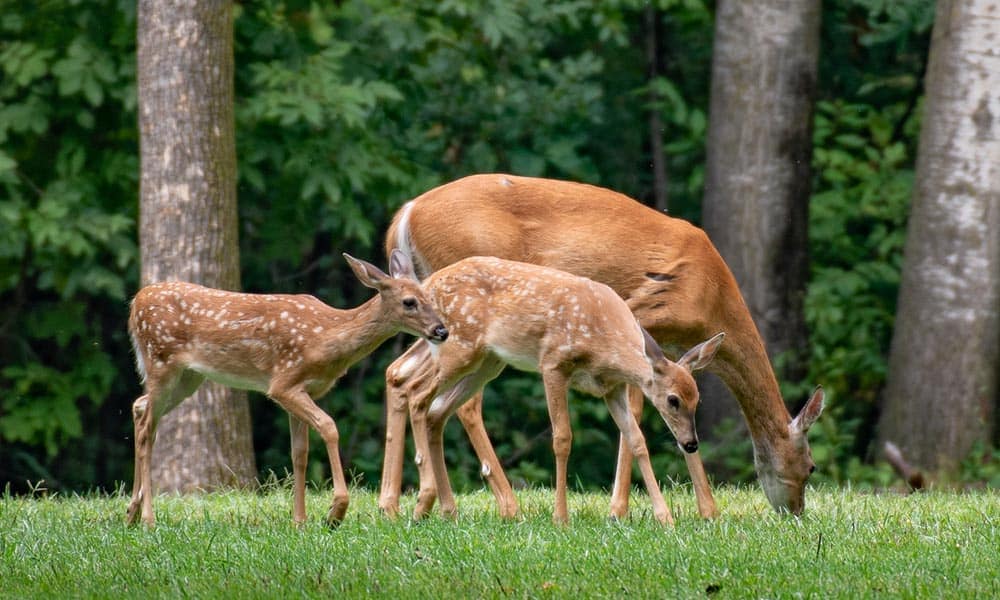
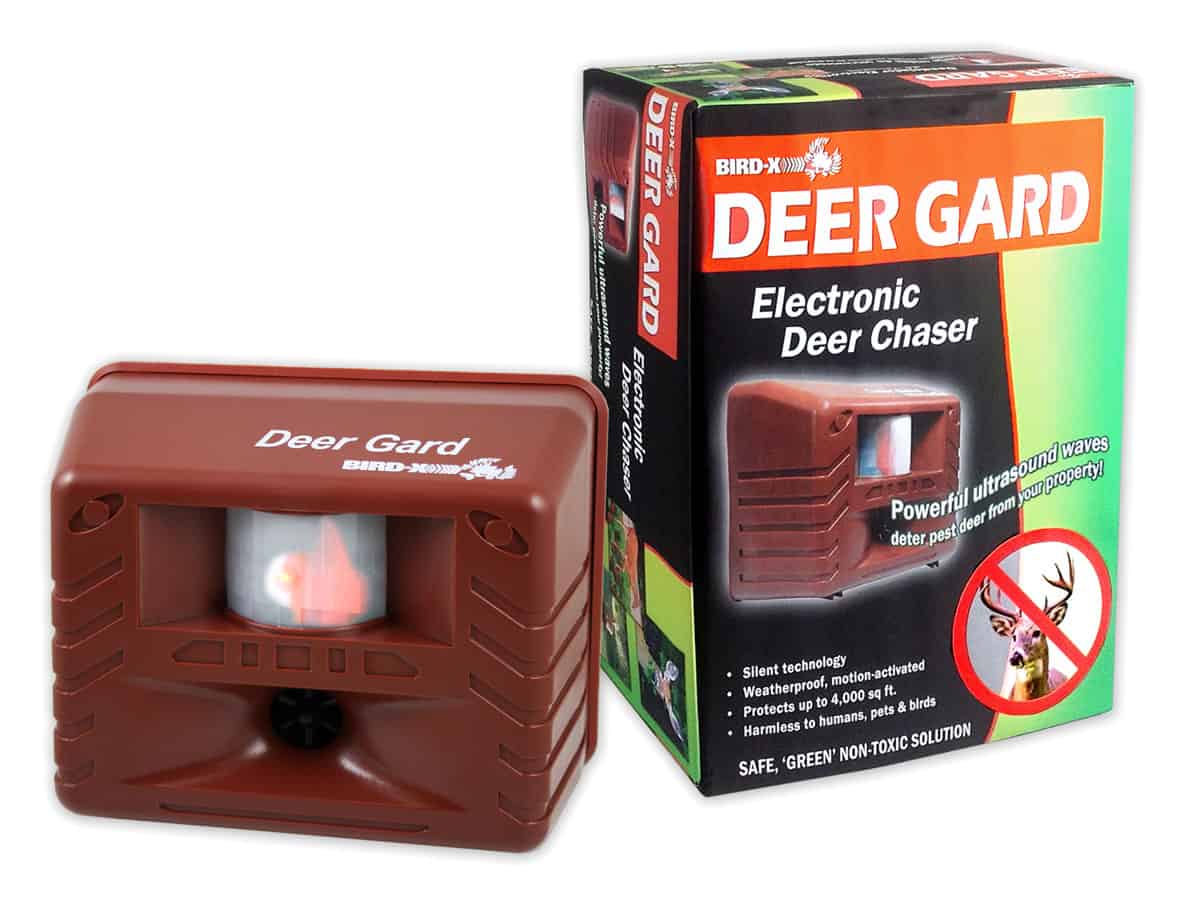
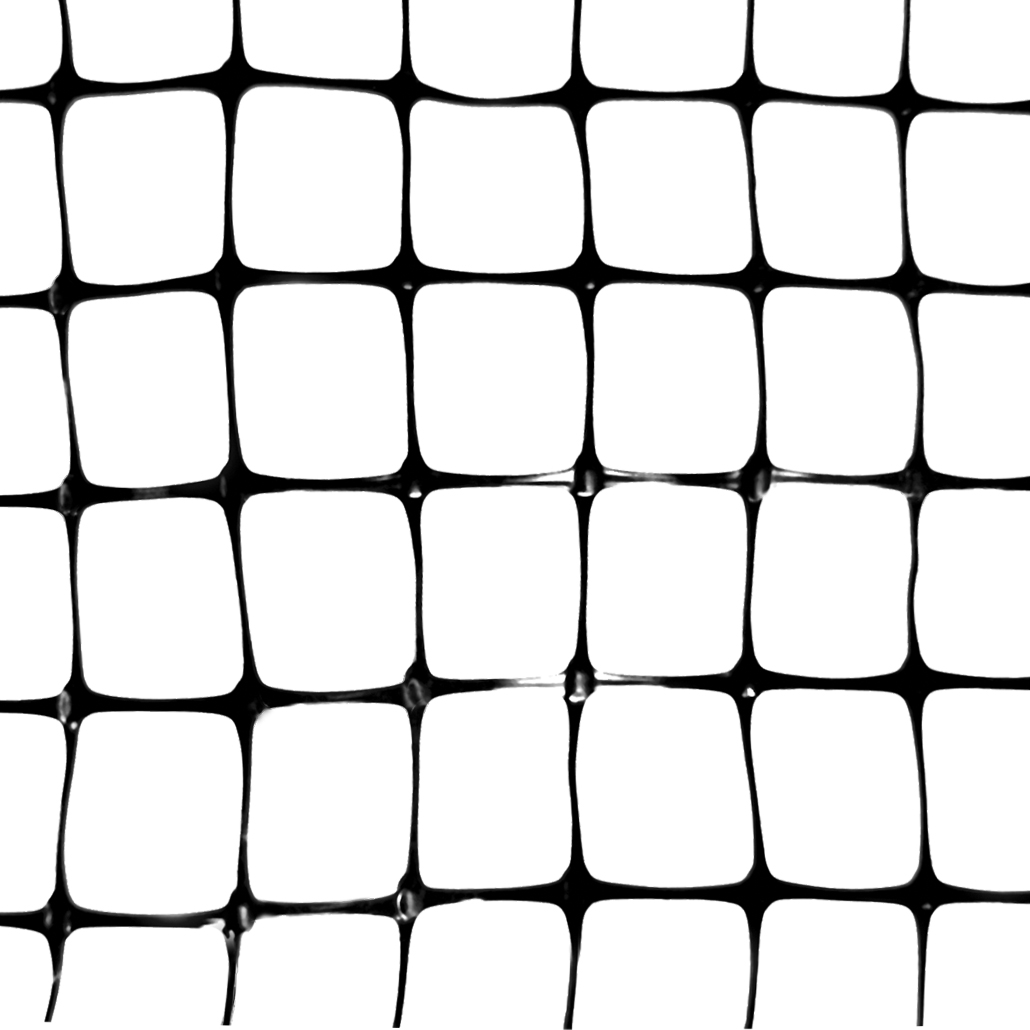
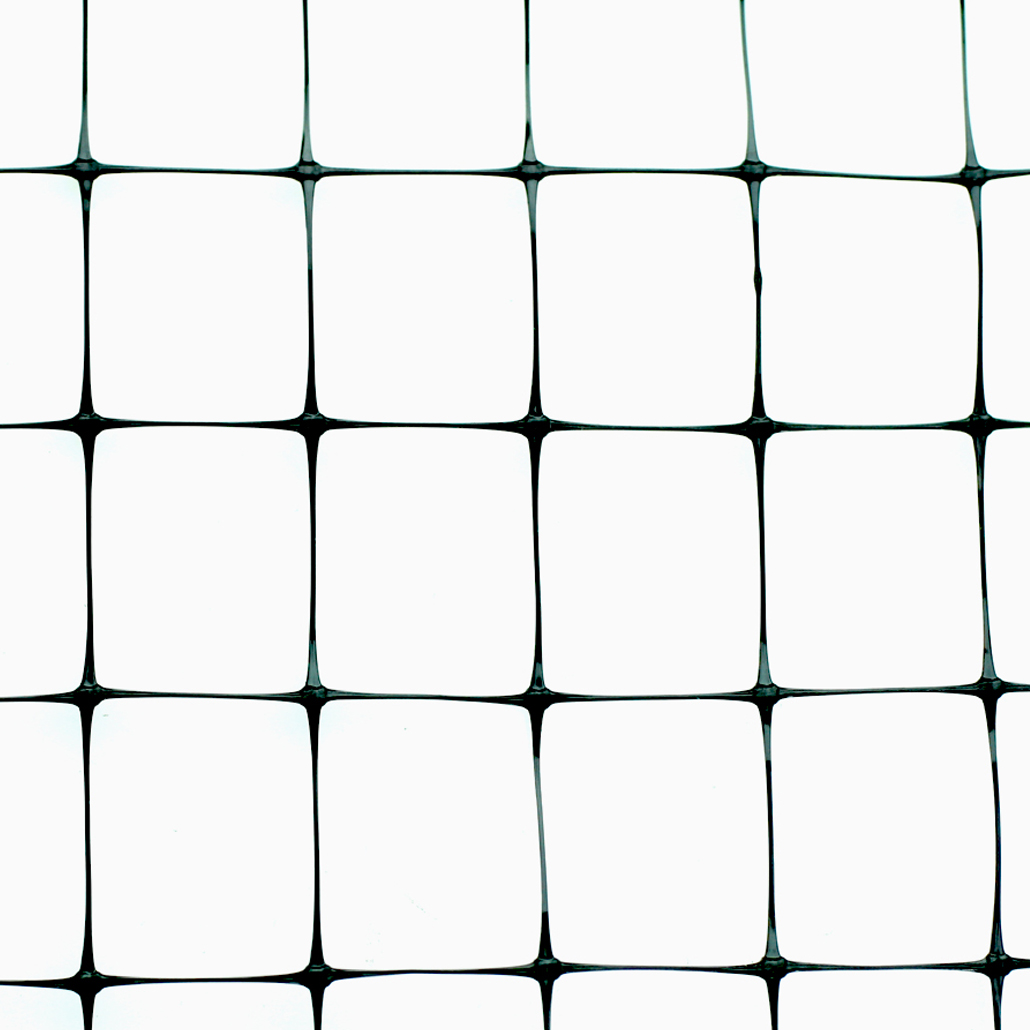
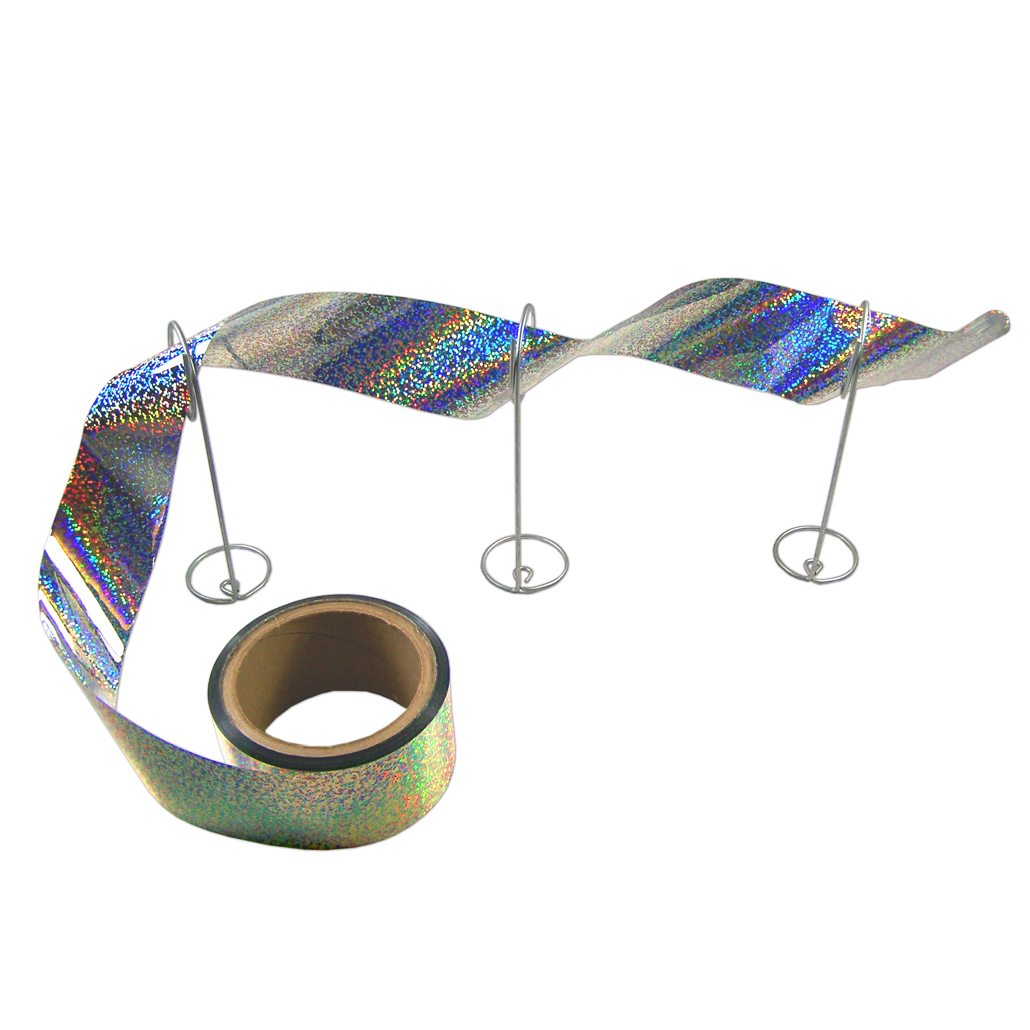


Dog silohettes have been used for keeping away Canadian Geese from foiling areas. Would that work for deterring deer?